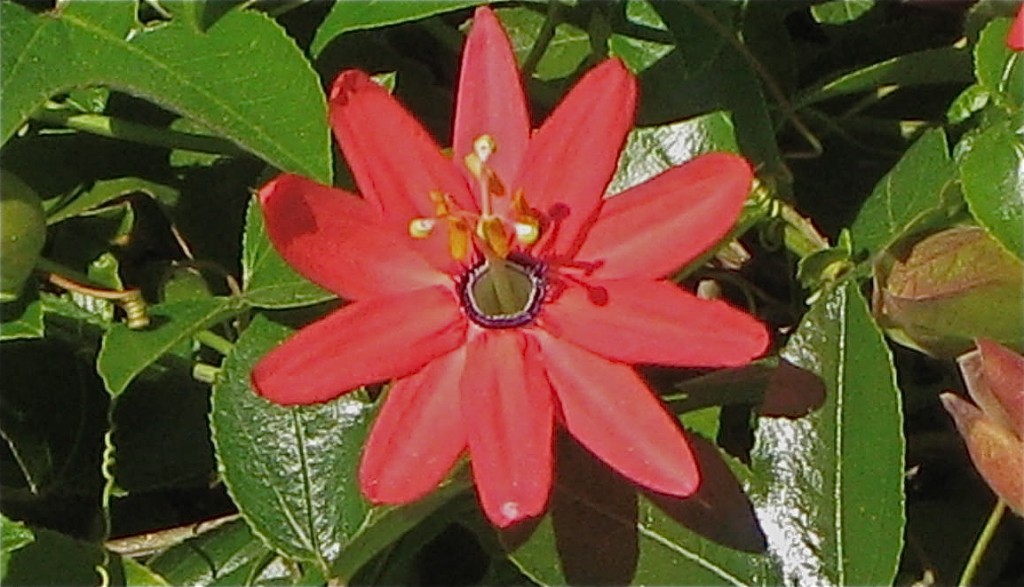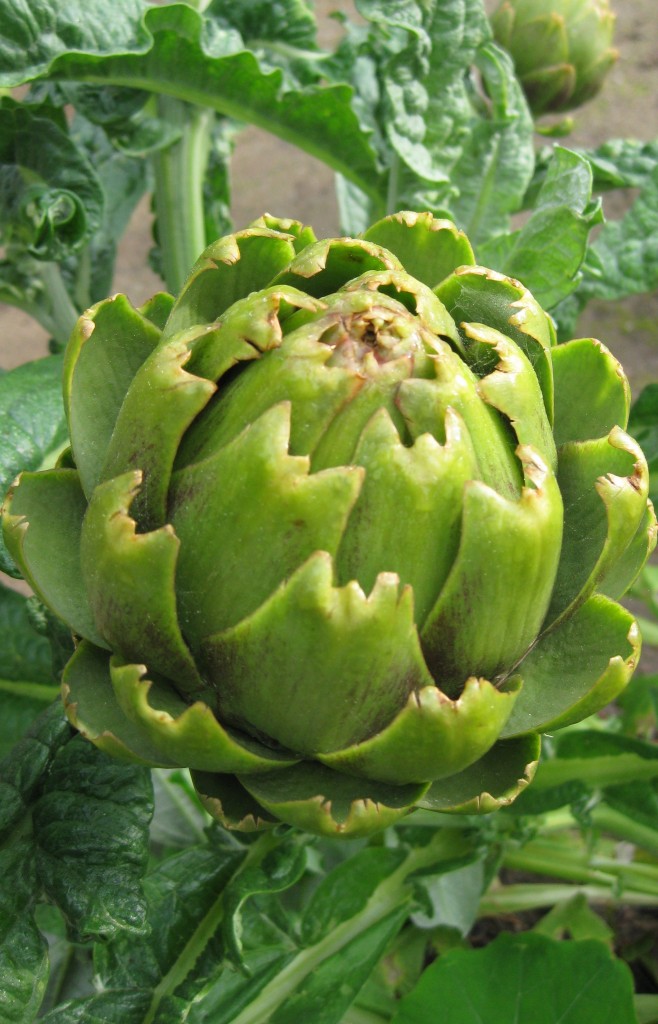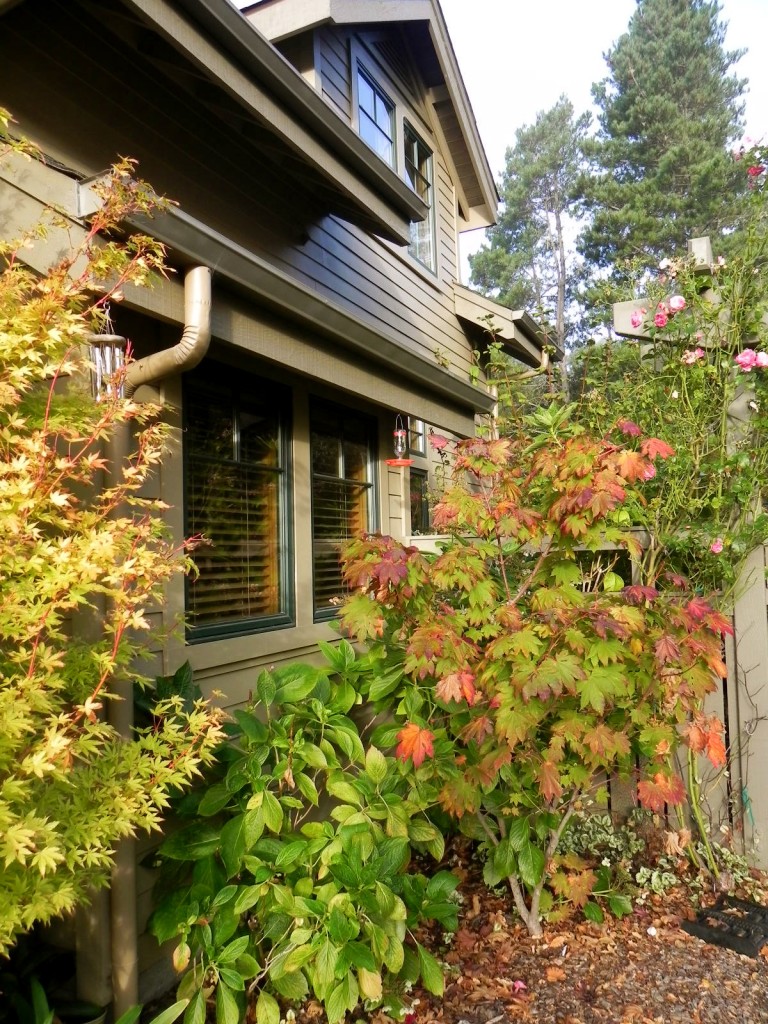
You can grow vegetables in greenhouses, raised beds, mounded beds, rows, and in containers. You can plant a “French-intensive” garden or a formal kitchen “parterre”. But if you don’t have the space to dedicate exclusively to vegetables, consider tucking seasonal vegetables in and around your landscape plantings. Planting vegetables among your ornamentals allows you to expand your edible garden while beautifying your landscape. The practice of integrated planting saves space year-around, intermingling cool-weather greens in the winter and early spring with herbaceous plants in the permanent landscaping. Color and focal points in annual and perennial beds can be added by including flowering vegetables crops. Edible herbs also thrive in and around landscape plantings and are often deer resistant.
A mixed bed of ornamentals and vegetables requires the same growing conditions as any well-tended garden bed. It is essential, however, that vegetables have well-amended soil so that roots can penetrate and the soil can retain nutrients and drain well after winter rains. Most vegetables need good light and plenty of moisture. A soaker hose snaked through your garden bed will ensure the adequate watering of thirsty vegetable plants. Dry ground shaded by hedges will not provide vegetables seedlings with the kind of environment they will need to produce succulent vegetables.
When planning an integrated garden, take into consideration color, texture, and the size and shape of plants. The planting of vegetables will not only contribute fresh, seasonal food and herbs to the table, they will add visual variety to your garden. Summer flowering vegetables such as eggplant, red and yellow tomatoes, and peppers, will add vibrant color to landscaping. Corn, pole beans and peas add height. Vines are especially effective for background plantings when trained on trellises, fences, and bamboo poles. The spacing of plants depends on the type of plants chosen. Red and purple chard contrast well with gray-foliage bedding plants. Ornamental kale is usually grown for decorative effect but is quite delicious to eat. Oak leaf lettuce makes a pretty edging for summer annuals. Leafy lettuces can be trimmed and harvested as needed, and continue to grow through spring and summer. Cannas and corn grow well together to form a tall hedge at the back of a planting bed. Dahlias fit well with tomatoes, eggplants and squash. Silver-leaved artichokes blend with other gray Mediterranean foliage such as lavender and santolina and intermingle well with green and purple basil. Yellow bell peppers look striking with Rudbeckia and marigolds.
Planting vegetables among your shrubs and flowers has other benefits in mixed gardens. Flowers are believed to attract beneficial insects. While little research has been published in this area, organic farmers often plant flowers among their salad greens to attract beneficials. Parasitic wasps, lady beetles, and syrphid flies (whose larvae eat aphids and other pests) are among the beneficial predators that need pollen and nectar in the adult stage of development. Flowers with nectar and pollen also attract honeybees and other pollinators to your vegetables, ensuring that you have good fruit set in crops such as tomatoes, eggplants, peppers, and squash. The adult beneficial predators will hopefully lay eggs on your garden crops. When the eggs hatch, the hungry larvae will feed on garden pests. The use of pesticides among a mixed garden of edibles and ornamentals should be excluded.
Start planning now for integrating those delicious vegetables in your spring garden.



Comments
Comments are closed.